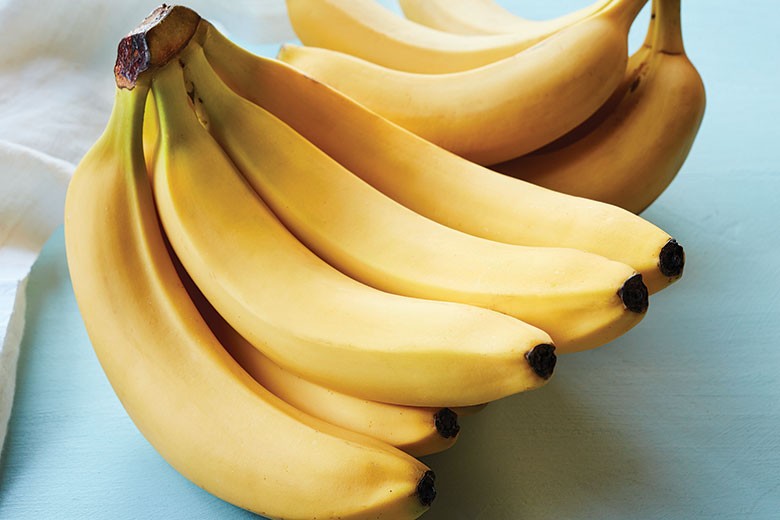
Contents
Are Bananas a Fruit or a Berry?
If you’ve ever been surprised to hear that bananas are berries, you’re not alone. But it turns out that your friends were right.
Although bananas are commonly thought of as fruits and not berries, there’s a lot of confusion surrounding this topic.
In this article, we’ll explore whether bananas are berries and learn how to distinguish between fruits and berries.
Fruits are the parts of a flowering plant that develop from the ovary. These fruits typically contain seeds and protect them until they can be effectively dispersed. The fruit family includes various subgroups like berries, citrus, stone fruits, and pomes.
Berries are fruits that grow from a single flower and have one ovary, but contain multiple seeds. By this definition, bananas are actually berries. When peeled, bananas reveal tiny seeds that resemble black spots, often going unnoticed by many people.
It’s interesting to note that strawberries and raspberries, which are commonly considered berries, do not meet the botanical definition of berries. On the other hand, avocados, pumpkins, and cucumbers are also considered berries.
Berries typically consist of three layers: the exocarp, mesocarp, and endocarp. Together, these layers form the pericarp, which originates from the flower’s ovary.
The exocarp is the edible skin of the fruit, like in grapes. In contrast, the peel of a banana is not edible.
The mesocarp is the central fleshy part of the fruit that we typically consume, such as in apples or plums. In citrus fruits, the mesocarp is the thin white layer we peel off.
The innermost layer, the endocarp, surrounds the fruit’s seeds. In many fruits, including bananas, the endocarp is thin and easily overlooked.
In order to be classified as a berry, a fruit must grow from a single ovary, have a soft exocarp and fleshy mesocarp, and contain one or more seeds within the endocarp. Bananas meet all of these criteria, making them berries from a botanical perspective.
Why are bananas considered berries?
When you think of berries, small fruits like strawberries or raspberries likely come to mind. However, these fruits are not considered berries.
Strawberries, for example, grow from flowers with multiple ovaries, forming thick clusters called stems.
On the other hand, bananas and other fruits sometimes referred to as berries became classified as such long before scientists and botanists defined the different fruit groups.
Many people are unaware of the scientific names given to fruits and berries, and since certain fruits were already labeled as berries before their botanical classification, they continue to be referred to by their common names.
Furthermore, even botanists disagree on the classification of certain fruits and berries, causing further confusion. This is why many fruits are still referred to as fruits, even though they closely align with the botanical definition of berries.
What distinguishes fruits from berries?
The term "fruit" refers to the sweet parts of flowering plants. Fruits serve as the reproductive organs and play a crucial role in distributing seeds for plant multiplication.
Fruits can be broadly classified into two types: fleshy and dry. Dry fruits include legumes and nuts, while fleshy fruits, like apples, cherries, and bananas, are what we typically consider fruits.
Fleshy fruits are further categorized into three groups: simple fruits, multiple fruits, and aggregates. Berries belong to the group of simple fleshy fruits. It’s important to note that while all berries are fruits, not all fruits are berries.
Most fruits originate from the ovary, the female reproductive part of a flower.
Strawberries, for example, are the red, juicy parts that grow on the thick stem. Each individual strawberry, commonly thought of as a fruit, is actually an achene that contains a single seed. The small greenish-yellow parts typically mistaken for seeds are actually individual fruits.
Botanists do not classify fruits that grow in clusters or aggregate forms as berries.
In some fruits, a tough pit grows from the inside of the ovary, enclosing a single seed. These fruits, known as drupes, serve to protect the seed. Examples include peaches and plums.
While some berries contain only one seed, they lack the hard endocarp that surrounds the seed in drupes.
All the factors mentioned above contribute to bananas being commonly referred to as "fruits" rather than using their botanical classification as "berries" or "drupes," which could lead to further confusion.
QUESTION
Fruits such as dates, palms, and pecans are classified as drupes due to their tough, seed-covering endocarp.
Fruits like walnuts, pistachios, and macadamias, commonly referred to as nuts, are also considered drupaceous nuts.
The coconut is a dry drupe. It has a green, water-repellent outer layer (exocarp), a bulky, cartilaginous husk (mesocarp), and a solid wooden inner layer (endocarp) that protects its large seed.
Coconut milk, known for its nutritional content, is a liquid endosperm that failed to develop into tissues. However, there is ongoing debate surrounding the classification of many fruits and the criteria used for categorization.
For instance, macadamia nuts are classified as follicles according to the California Macadamia Society. Further research is necessary to establish a more cohesive classification system.
As mentioned earlier, drupes typically have a fleshy fruit portion and a tough core containing a single seed. On the other hand, berries have a soft endocarp covering the seeds, which can be numerous.
Which other fruits are classified as berries?
Bananas aren’t the only fruits with confusing botanical classifications. Many other commonly considered fruits fall into the category of berries based on their botanical definitions.
Examples of such fruits that often cause confusion include tomatoes, grapes, kiwis, avocados, peppers, eggplants, and guavas. These fruits are technically berries since they grow from flowers with one ovary, have a fleshy center, and contain one or more seeds.
However, in everyday language, they are identified as fruits or vegetables.
Can bananas be called berries?
Yes. Technically, bananas are berries, while strawberries and raspberries are not.
Berries are a subgroup within the larger category of fruits. They are sweet, fleshy, seed-bearing parts of a flowering plant. Bananas grow from a single ovary, containing small seeds within their innermost layer, a fleshy middle, and an inedible outer layer.
While scientifically bananas are berries, it’s also correct to refer to them as fruits. Additionally, all the fruits mentioned here are indehiscent, which means they don’t split open when they mature, a characteristic of berries.
References:
– Banana Label Catalog: "Is a banana a fruit, berry, or vegetable?"
– Colorado State University: "Everything You Need to Know: Is That a Berry?"
– McGill University: "Bananas are Berries. Raspberries are Not."
– Palomar Community College: "Identification Of Major Fruit Types."
– Stanford Magazine: "Bananas Are Berries?"


